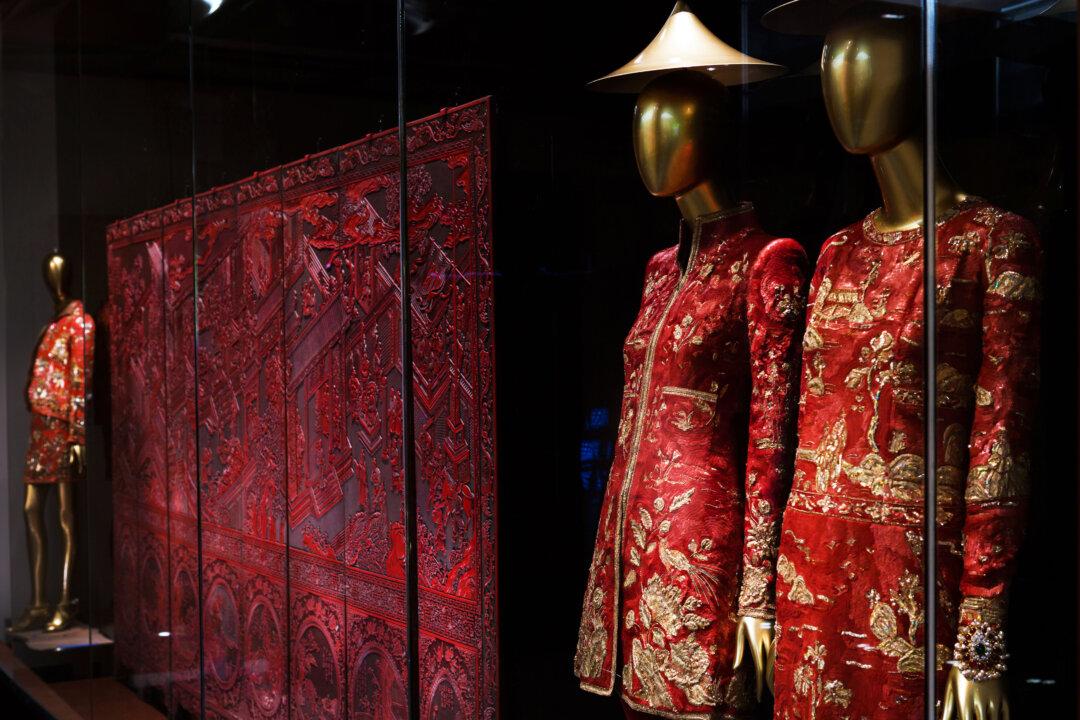The Metropolitan Museum’s new gargantuan fashion exhibit, China: Through the Looking Glass, has its fair share of glamour-struck gawkers as well as apologists. It’s clear that the exhibit is primarily meant as an eyeball feast, secondarily as an examination of how Chinese aesthetics have fed Western imaginations, and not at all meant as a historical survey.
Neither is it a political critique. The Costume Institute exhibit includes an actual Mao suit, a Mao dress by Vivienne Tam, and a Mao-inspired Dior ensemble—and barely refers to the human suffering in China that followed and still follows the Cultural Revolution. Not surprising given the exhibition’s funding, which included some prominent Chinese donors.
Chinatown, Not China
Spanning three floors, the exhibit is packed with impressive designer dresses that bear superficial resemblance to Qing emperors’ robes, or the patterns on ancient pottery and bronzes. Some cases, like an otherwise standard tuxedo jacket by Ralph Lauren done in red brocade, are exercises in using Chinese fabric on Western designs, plain and clear.






